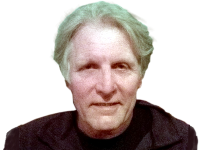
Steve Whitaker, Literary Editor
Review: Life In Our Hands at Settle Stories
![Shanthamani Muddaiah]()
Shanthamani Muddaiah
Of earnest grasping, would, if it were cold
And in the icy silence of the tomb,
So haunt thy days and chill thy dreaming nights
That thou would wish thine own heart dry of blood
So in my veins red life might stream again,
And thou be conscience-calm’d – see here it is –
I hold it towards you.
John Keats
The inherent expressiveness of hands, the power to describe, to dexterously fabricate, to gesticulate wildly, to shape a universe in one vast arc, confers a genius beyond utility. For Keats, they are suggestive of both creativity and malefaction, though claimed, here, as metaphorical conduits to reconciliation beyond the death which shadows much of his poetics.
Hands may be emblematic of the whole corporeal frame, as Rodin and Dürer depicted, concealing a hidden energy or yielding suggestions about experience, labour, and even personality through contours of veins or gnarled fingers. The artist Lucian Freud spent the best part of a lifetime reading subcutaneous truth in the viscera of lines, wrinkles and human bodily decline.
And in an exhibition of rare insight at Settle Stories, renowned Indian sculptor Shanthamani Muddaiah achieves something of the same order of incisiveness by reversing the telescope to examine the cultural mores of this small Craven town through the voices of its inhabitants. A sociological manifesto, and thing of great beauty,
Life in our Hands is a video record of conversations with locals about the life and the history of the district, conducted by Shanthamani as she creates an image of the participants' hands through the technique of plaster casting. At once an empirical narrative and a revelation, the exhibition shapes its own meanings. Shanthamani has said that she is fascinated by how the unusual nature of the interview scenario – she listens as she moulds and manipulates the plaster to hands on camera – encourages a different kind of dynamic in the participant’s response. In this sense, hands, or rather the process of creating an enduring facsimile of them, are the means by which a dialogue is released, as much as they themselves may also represent an embodiment of character trait.
A species of honesty is, as it were, vouchsafed at point of contact. From the mélange of talking heads – small video screens of each interview are juxtaposed with the respondent’s hands, variously and naturally disposed – the visitor takes away the impression of an agglomeration of tiny voices, cogs working centripetally and centrifugally to yield the illusion of directed momentum. For within the disparate bundle of opinions, attitudes and autobiographical transcriptions, it is possible to infer a bigger picture: the prejudices and contradictions which characterise a cataclysmically-changing world find echoes in small, imperfect backwaters. Differentiated only in terms of its nuanced demographic, Settle’s cultural appurtenances do not necessarily contradict the wider commonwealth of anxiety.
As deliberately removed from Shanthamani’s birth and workplace in India’s deep south west as is possible, her curation of
Life in our Hands gives urgent definition to the idea of open expression through relaxed dialogue. And the results are at once revelatory and profound. The rich diversity of respondents – stationmaster to educator, farmer to cobbler, motor mechanic to retiree – share the same misgivings, the same sense of ‘future shock’, and thereby confound expectation for a relatively remote community. From the phlegmatic diagnosis of local Margaret Mellor that ‘people don’t seem to cling together like they used to’, to the farmer’s observation that ‘everything is conspiring against a simple life’, the changeful social landscape is often a cause for foreboding. The physical terrain of hills and dales also mutates over time, as manicured by human intervention as to utterly convince the passing tourist of its ‘natural’ blandishments, excepting where, as one participant insightfully notes, the attitude itself has changed.
Shanthamani’s magnificent rendering of what it means to be human in this beautiful corner of England is best distilled in Sita Brand of Settle Stories’ own words. Easy to forget, whether your provenance is authentically-local, ‘offcumden’ or negotiable, that ‘home’ resides in the head:
‘Belonging to a place is about what you feel inside you’.
Life in our Hands is showing at Settle Stories, the Joinery, Settle, until 28th February.
More information here:
https://www.settlestories.org.uk/whats_on/life-in-our-hands-visual-art-exhibition/



